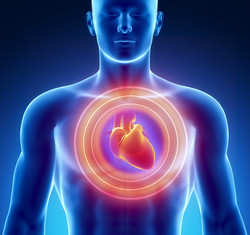Low-dose radiation and cardiovascular risk
The risks of developing CVD are well described for high doses of radiation exposure (e.g. radiation therapy). However, for doses below 500 mGy the evidence for a dose-response relationship is weak. The EU-funded PROCARDIO (Cardiovascular risk from exposure to low-dose and low-dose-rate ionizing radiation) project has completed an analysis of a case-control study of childhood cancer survivors who later developed cardiac disease. The analysis has combined transcriptional and translational (proteomic) studies to identify new biomarkers of radiation-induced CVD for future studies. Researchers also used the archives of accumulated cardiovascular tissue samples for the validation of new biomarkers. Project members investigated a total of 900 cases and 900 controls (who did not develop CVD) from EU countries. Algorithms of dose estimation and positioning of the heart have been developed to compensate for variations of volume and position of the heart during exposure. It was shown that co-culture of endothelium and smooth muscle cells provides the best model for studying cellular responses to radiation. Researchers analysed regulatory protein modifications taking place during radiation-induced changes in the heart tissue to obtain biomarkers. MicroRNAs as well as both de-acetylated and mitochondrial respiration complex proteins are indicated as potential biomarkers of radiation-induced heart disease. Results showed that a dose and dose rate correction factor should be considered for cardiovascular tissue. Cell interaction – monocyte adhesion to and the infiltration of lipids through the endothelium – is important for radiation-induced atherosclerosis. The researchers also found that there was an effect of irradiation on remote non-irradiated tissue, which may increase atherosclerotic plaque formation in untreated vessels. Data was used to construct two models to represent radiation action that show a good fit with data. One indicates that plaque initiation is the key process in radiation-induced heart disease. The other, when applied to A-bomb survivor data, shows a non-linear dose-response relationship at higher doses. The PROCARDIO approach assumes that conventional radiation effects (misrepaired DNA damage, resultant gene mutations) do not apply to cardiovascular effects of low-dose radiation. Investigation of the alternative processes could lead to more models and a new interpretation of the dose-response relationship.
Keywords
Low-dose radiation, cardiovascular risk, CVD, biomarkers, atherosclerosis



